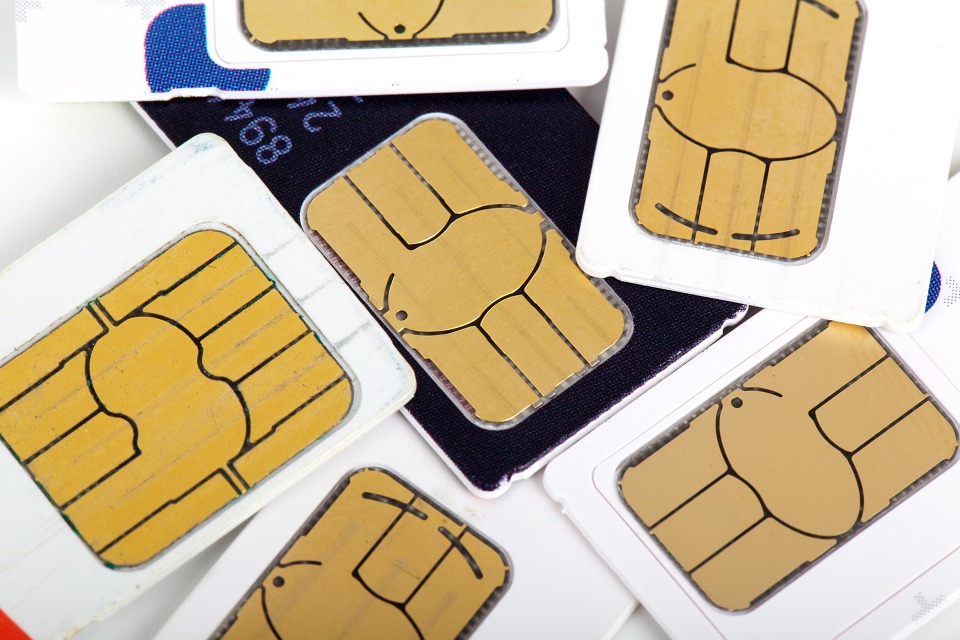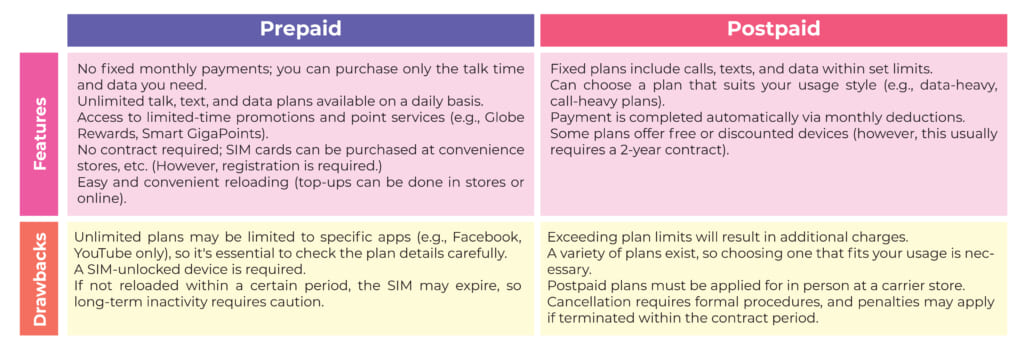Staying Connected: A Guide to Postpaid VS Prepaid and the SIM Registration Act in the Philippines
There are two types of mobile services in the country that are always in comparison especially when we talk about practicality and convenience — postpaid and prepaid. These services are offered in all mobile telecommunications in the country, all with their respective promotions and exclusive offers.

But how do postpaid and prepaid services really work, and do they both need to be registered? Before we list down some tips for choosing the perfect mobile service for you, let us discuss the difference between prepaid and postpaid.
Prepaid and Postpaid
Here in the Philippines, prepaid SIM cards allows subscribers to pay in advance for calls, texts, and data by manually topping up credits as needed. There are no contracts, and users can easily switch providers by purchasing a new SIM. Prepaid plans are ideal for budget-conscious individuals, tourists, or light mobile users, as they can choose from a variety of short-term promos for unlimited calls, texts, or data. However, once the load runs out, services stop until the user reloads, and roaming services are limited unless activated in advance.
On the other hand, postpaid SIM cards come with a fixed monthly plan, providing a more stable and convenient mobile service with higher-priority network access, unlimited data options, and additional perks like streaming subscriptions or international roaming benefits. These plans typically require a contract (from six months to two years), and exceeding the allocated usage may result in additional charges. Postpaid is great for professionals, frequent travelers, and heavy data users who need consistent and reliable mobile connectivity.

So, what’s more practical and what’s more convenient for you? Here, we got tips that might help you in choosing the perfect service for your needs.
Know Your Needs
The very first step in choosing the mobile service for your use is knowing your needs. Whether you’re a businessman working on the phone every single day, or someone who isn’t a text or call kind of person, you still need to weigh your options. Focus on what and how much of that service you will need.

In breaking these down, you have two things to consider:
Texts and Calls
How many text messages do you send in a month? How much time do you spend on phone calls every month? Do you need unlimited calls and texts every single day or are you a once-in-a-while caller or texter? Know your needs and list them down.
Data
Understand that mobile data are a bit pricey when paid for with regular airtime. You have to manage your data usage by looking at the Data Manager settings of your phone. Here, you can see how much data you’ve spent for the entire month, and you’ll get to know how much you need in the next following months.
By knowing your estimated data usage, you now know if you’re a huge data user or not. Prepaid and postpaid services have exclusive promos and offers suited for your data needs.
Weigh Your Options
Now that you have listed your needs, it is now time to weigh the pros and cons of choosing a service for your mobile phones. Know that both prepaid and postpaid have pros and cons that you might want to know before you choose one.
For prepaid users, you can save money on buying load for the specific services you will need, whether it’s just for calls, texts, or data usage.
You may still apply for unlimited call, text, and data services on a daily basis, but there is no fixed monthly payment. You may also benefit from exclusive promos and point services garnered by topping up with load.
However, purchasing load can be a hassle for many, especially without an installed mobile application where you can buy an e-load from. Aside from this, it is also sometimes difficult to understand how to apply for unlimited plan with the different codes that each telecommunication service utilize.
Because of these, some people opt for postpaid services which does not require you to spend time and effort to load your sim. It goes with unlimited calls, texts, and data within plan limits, and payments are made once a month. When you sign up for a contract, you are also provided with the latest mobile phone models, depending on the postpaid plan you chose.
Still, you also have to understand that it comes with additional charges when you exceed your plan limit, especially if you left your mobile data on for long periods of time. This can make your bills even more expensive, so choose wisely!
Also read: EXPATS GUIDE: Navigating Utilities and Bills in the Philippines
Choose Your Service
Now that you already listed down what you need, how much of each you need, and the pros and cons of choosing between the two, it is now time to decide the perfect service for you.

If you prefer the convenient way of making calls and texts without worrying about your load, then you might want to get the postpaid plans your mobile carrier has to offer. But if you’re not much of a load spender, and you’re more of the practical one, you can avail load cards or loads in the nearest kiosk whenever you need one.
The decision all depends on your need and your choice of practicality and convenience.
Important Reminder
Whether you’re a postpaid or prepaid subscriber, one thing is certain. You still need to register your sim card as soon as possible, according to the Republic Act No. 11934 or the SIM Registration Act (SRA)!
Implemented in December 2022, the SRA mandates the registration of all prepaid and postpaid SIM cards to combat cybercrime, fraud, and identity theft. Under this law, all mobile subscribers—including Filipino citizens and foreign nationals—must register their SIM cards with their respective telecom providers by submitting personal details, a valid government-issued ID, and a live selfie for verification. New SIM cards must be registered before activation, while existing users had a deadline to comply or face deactivation.
For foreign nationals, SIM registration is required but differs based on their stay. Tourists can register for a 30-day temporary activation, extendable with visa proof, while foreign residents must submit additional documents such as an Alien Certificate of Registration (ACR), visa details, and proof of residence. Failure to comply results in SIM deactivation, while providing false information or using fake IDs carries legal penalties.
For foreigners, registered SIMs are initially valid for 30 days, but users may extend their registration period by submitting an approved extended visa to their respective Public Telecommunications Entity (PTE). Foreign SIM end-users may register using their passport and/or visa. Failure to comply results in SIM deactivation, while providing false information or using fake IDs carries legal penalties.
Also read: How to Register Your SIM Card in the Philippines














